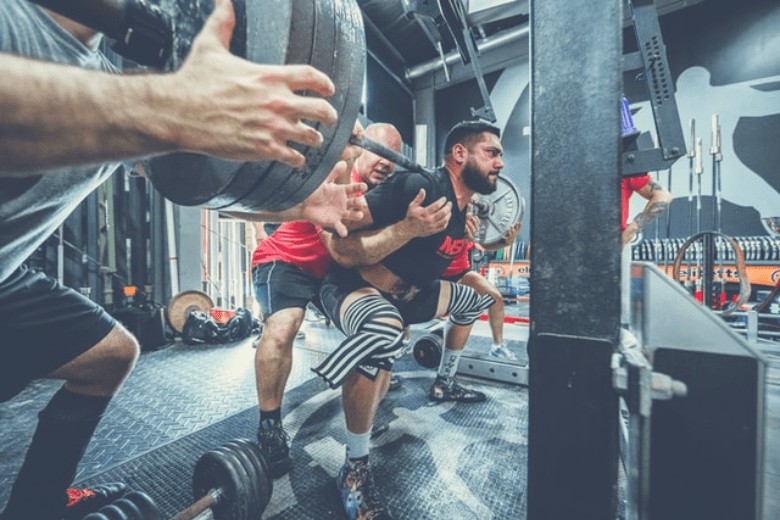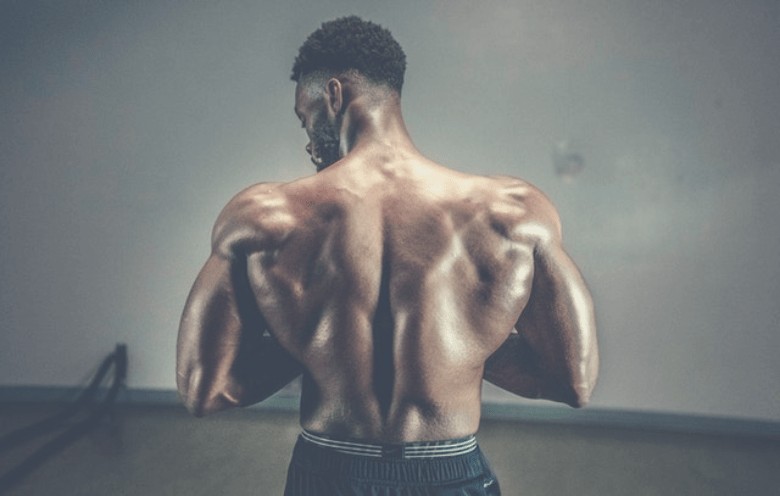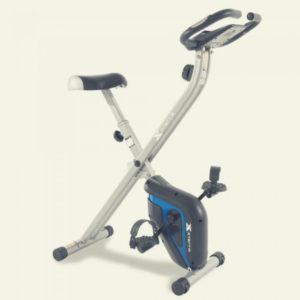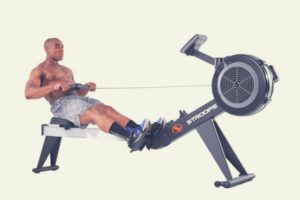If you’re reading this, I know two things about you.
First, you’re tired of your looks.
Every day you get out of bed and look into the mirror and you’re just unhappy with the way your shoulders look and wish there was something you can do.
Second, you know you can do better and want to but are confused.
Your shoulders aren’t growing and no matter what you try, or you may even have pain from working out.
The good news is I’m here to help you get the strong shoulders you desire, injury, and pain-free!
Why You Should Pay Extra Attention to Your Shoulders

How someone perceives you is everything. When you meet someone for the first time, you don’t want them to judge you based on your stature.
Just imagine meeting up with your company’s CEO and he has the suit, tie, and everything – except he has scrawny arms and tiny, narrow shoulders.
You’d be sitting there thinking “Wow, he looks pretty weak and shy.” Broad shoulders give the illusion that you’re powerful and confident, even if you’re not.
Regardless of what you have on, you want broad shoulders that demand respect.
Imagine walking into a room and you dominate every situation all because you decided it’s time to stop looking weak and start looking strong.
Now, some of you might be thinking, “I don’t care about domination or looking powerful, I just want to look and feel strong.”
The good news is this guide helps you on your fitness journey too.
If you’re nodding your head “yes” to any of these then let’s unpack all there is to know about building strong shoulders.
Anatomy of the Shoulder Muscle
Two groups make up your shoulder muscles: extrinsic and intrinsic. Extrinsic muscles attach to the bones of the shoulder and intrinsic attach to the humerus.
Extrinsic
The trapezius is a triangle-shaped muscle. These muscles support your arms and shoulders. You use them to raise your arms.
You have both a right and left trapezius. Latissimus dorsi often referred to as the “lats” is the largest muscle in your back. It’s partially covered by the trapezius.
The latissimus dorsi helps with managing your bodyweight.
Levator scapulae are on the side and back of your neck. It lifts your triangle-shaped bone in the back of your shoulder and connects with your humerus and collarbone.
Rhomboids are the muscles in the middle of the shoulder blade and the top of your back. They pull your shoulder blades together when they contract.
Intrinsic
Deltoids have three parts of muscle fibers called anterior, lateral, and posterior. They’re connected to a thick tendon that’s V-shaped.
This muscle fiber group is responsible for your arm’s rotation and makes less room for injury when carrying heavy things.
Teres major is a small muscle on the underside of your upper arm. It assists the latissimus dorsi due to the connections.
Your rotator cuff includes a group of muscles and tendons that surround your shoulder joint.
It’s important to know the individual muscles because each one has a separate function. It might be a better idea to workout out each muscle separately if you can.
This will ensure each muscle is getting special attention to get bigger and stronger.
Five Tips to Strong Shoulders
Building strong shoulders takes time and hard work. However, you can make it to where you’re at less risk for injury and more maximizing your efforts.
It’s common when you first start, or even as an advanced lifter to follow what they’re told or what may have worked in the past.
While that might work for you, you could be putting yourself at risk for injury or even slowing your gains.
Following these tips below will help you get the shoulder size you desire with minimal risk and time.
Pull Vs Push
Your excitement is probably overtaking you and you want to head to the gym or weights and just start pumping out reps.
But that’s the last thing you should do.
Why?
You want to have your pull vs push ratio to be just right.
Your body has more internal rotators than external ones.
Your internal, like your pecs, become flexed by overhead presses, so they become stronger.
Now, you’re thinking, “Well duh! Isn’t that the whole point?”
Yes, but at the same time, it may lead to rounded shoulders. That’s the opposite of what you want.
What can you do?
Well, for starters, you want to hit certain areas of the shoulder. For example, shoulder presses target the anterior deltoids.
It doesn’t take much weight to make them show.
However, the rest of your shoulder muscle groups lack.
You want to make sure you’re targeting your medial and posterior delts just a tad more than the anterior delts.
Building up your anterior delts is crucial because it helps relieve shoulder pain and gives you that confident posture stance.
To get that perfect push and pull ratio, you simply follow a three-way sequence and perform it until muscle fatigue.
Grip
You may notice that you sometimes feel pain when you perform barbell overhead presses.
You might even be confused as to why when you think you’re doing everything right.
The biggest problem is your grip.
You’re holding on to this massive weight which doesn’t allow for much range of motion for the shoulder joint.
Swap barbells for dumbbells.
You might think you’re taking a step back but in reality, you’re making it easier on your shoulder joints to lower and lift the weight.
This will help prevent injury too.

Control and Time Your Reps
The whole point of lifting is to maximize your muscle growth.
To do this you need to make sure your shoulders are under tension, not pain, during your sets.
Isolate your shoulders and work one at a time while simultaneously putting them under stress for a period of time.
One way to do this with shoulder presses is to lower one side at a time while you squeeze against the resistance.
Naturally, one shoulder will be weaker than another.
To combat this and ensure you’re growing equally, lower the stronger side than do the weaker.
The weaker side will benefit from being under tension longer.
Don’t Extend Your Elbows for Single-Joint Exercises
Overextension often happens when you’re a beginner. However, even some advanced lifters make this mistake with the middle and rear delts.
You want to keep your elbows locked and slightly bent when doing exercises like lateral raises or rear-delt flyes.
This only applies to single-joint exercises. You want to ensure your shoulder join is the only one that’s in motion.
Workout the Whole Muscle Group
This is more for the train hard and fast crew but it’s a great habit to pick up.
Typically, you work out harder and more, but it takes less time.
There are many reasons why you want to increase your training density. One reason is it’s a two-in-one type of workout.
You get the benefits of weightlifting and you train your cardiovascular system too without having to do extra cardio sessions.
It also increases how many calories you burn leading to more fat loss.
As it was mentioned earlier, you not only work harder but reduce your time spent working out.
Top Exercises for Strong Shoulders
The truth is there are tons and I mean tons of shoulder exercises you can do to make them again and get stronger.
Some of them are more for advanced lifters and some are classics that withstand the times. These exercises are what we consider the best for building strong shoulders.
Arnold Press
One of the most classic bodybuilder techniques for shoulders. This movement is meant to target the entire delts muscle group.
One tip to make sure you mitigate risk and obtain maximum gain: Keep a 45-degree angle as you press to the top. Don’t turn your palms fully.
You want to do three sets with six reps each and take a one-minute break in between each set. Sit on a bench with your dumbbells held in front of you.
Your palms should face your shoulders like you just finished a bicep curl. Push the dumbbells over your head and rotate your arms until your palms face away from you.
Straighten your arms, hold the position, and then reverse the movements back to the starting position.
Seated Dumbbell Shoulder Press
You can use a slightly heavier weight than what you would use for a lateral raise with the shoulder press.
You want to do three sets with six reps and a one-minute break in between each set. Sit on a bench and hold your dumbbells at should height.
You want an overhand grip here and not underhand. Press the weights above your head until your arms are extended. Slowly return to the start position.
Lateral Raise
Make sure you are switching your weights to lighter ones than ones you use for shoulder presses.
For this exercise, you want to do three sets with ten reps and a one-minute rest. Grab your dumbbells and hold them at your sides with your palms facing your body.
Lift the dumbbells out to the side while keeping your upper body in place.
Keep your elbows slightly bent and lift your arms parallel to the floor and slowly lower back to position.
Barbell Push Press
Take a barbell (with or without weight depending on your fitness level) and hold it at shoulder height.
You want your palms facing forward.
Make sure your feet are shoulder-width apart with your knees slightly bent. This helps initiate the movement.
Push up with your legs, not arms, to get the straight up above your head. Return with control back to the start position.
Do three sets of six reps with a one-minute rest between the sets.
Seated Bent-over Rear-delt Fly
You want to do three sets with ten reps each. Between each set take a one-minute break. You want to sit and lean forward.
Hold a dumbbell in each hand and above your feet. Stay bent and raise your arms slowly to the side.
The dumbbells should line up with your shoulders. Lift the weights up and down until you get your full reps in.
Landmine Press
Some people aren’t crazy about the Overhead Press exercise. There are a few alternatives but one we really like is the Landmine Press.
It helps build your strength, power, and is easier on the joints. You have a better range of motion than with the Overhead Press.
Stand at shoulder-width apart and hold the end of a barbell with one hand. Move the barbell up while keeping your elbow at a 45-degree angle.
As the weight moves up, lean into the press until your arm is fully extended. From that top position, slowly come back down to the start position.
This movement equals one full rep. You want to do three sets with eight to ten per arm and a one-minute break in between each set.
Final Thoughts
You want strong shoulders not only for your self-perception but for the world’s view of you.
Volumized shoulders make you look confident and you’ll feel strong too.
When you first start, you might make silly mistakes that can cause lasting damage.
Even the most experienced lifter can slack off on their form and hurt themselves in the process.
To avoid the risk of injury and maximize your shoulder gains, follow the tips and exercises above.
In due time, you’ll have strong shoulders that will make you look and feel great.




